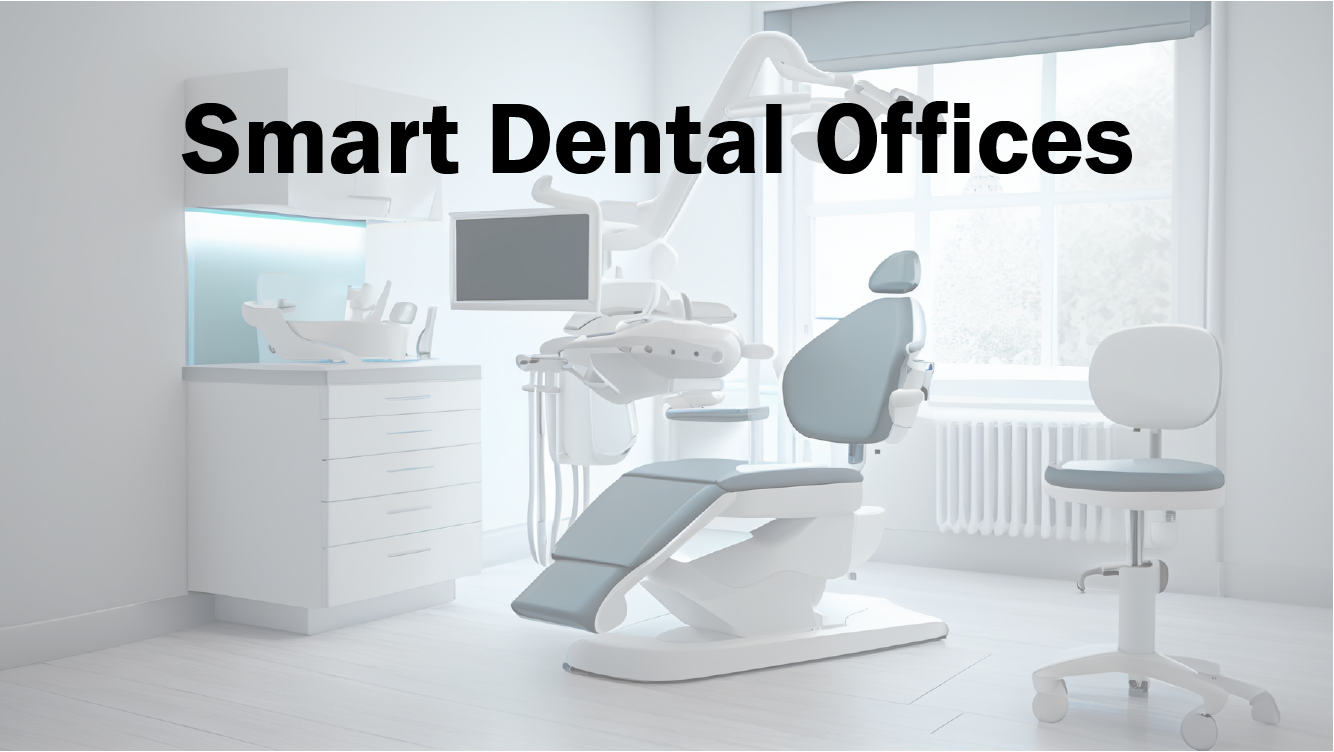
Smart Devices and Connectivity Shaping Modern Dentistry
Explore the impact of AI and next-generation connectivity in reshaping dental care, from real-time diagnostics to seamless device integration. Find out how Wi-Fi 6/6E and Bluetooth are creating smarter dental practices.
Published on October 2, 2024

Modern dental practices face unique challenges: outdated equipment, slow diagnostics, and manual data processes. However, the role of connectivity in modern dental offices is changing how practices deliver care, offering more precision and real-time data exchange. From smart tablets to imaging systems and even smart dental chairs, these devices rely on powerful connectivity modules and System-on-Modules (SOMs) to create a connected environment.
Leveraging AI and Wi-Fi in Diagnostics
The adoption of artificial intelligence (AI) in dentistry has allowed dentists to detect and diagnose conditions with higher accuracy, finding patterns that are too subtle for the human eye. AI algorithms are being used to analyze dental radiographs, such as x-rays and computed scans, to identify abnormalities like early-stage cavities, gum diseases, and oral cancers. These algorithms are trained on large datasets of dental images and use techniques like convolutional neural networks (CNNs).
AI-based systems need increasing computational demands to process large datasets. Designing on System-on-Modules featuring advanced processors, such as MediaTek’s Genio and NXP’s i.MX 8 & 9 series, provides necessary AI capabilities via the modules’ integrated Neural Processing Units (NPUs). These NPUs accelerate AI tasks, allowing real-time analysis of dental radiographs and delivering diagnostics insights.

However, the effectiveness of these AI-driven diagnostic systems depends not only computational power, but also on the capability of the network infrastructure to support real-time data exchange. This is where older Wi-Fi protocols, such as 802.11n (Wi-Fi 4) and 802.11ac (Wi-Fi 5), may not be able to handle large data transfers without causing network congestion. For example, AI processing involves uploading multiple high-resolution images to local servers or cloud-based platforms. Wi-Fi 4 and Wi-Fi 5 often struggle with bandwidth limits, increased latency, and lower efficiency when multiple devices compete for the network’s resources, which can cause slow response times. The need for reliable imaging transfer and faster data processing are key to keeping up with the technological advancements we see in every medical industry.
Alternatively, Wi-Fi 6/6E provide the capabilities needed to meet these computational needs of AI-driven systems. Features like OFDMA and MU-MIMO enable simultaneous communication with multiple devices, lowering the latency. The additional 6GHz spectrum introduced in Wi-Fi 6E relieves network congestion, allowing more data to be transferred smoothly and without interruption or interference from other devices. Ezurio’s Sona™ Wi-Fi 6/6E modules provide the advanced connectivity that makes AI-based diagnostics possible. This ensures that AI applications can proves and analyze data in real-time to increase efficiency, create better patient care, and allow for accurate diagnostics compared to older Wi-Fi protocols.
Connected Devices and Security Data Networks
Similarly to medical facilities, dental equipment is relying more on Wi-Fi and Bluetooth to increase simplicity through real-time, wireless control. Bluetooth-enabled devices like smart chairs and tablets use Bluetooth 5.x for its extended range and Low Energy (LE) capabilities to minimize power consumption. Unlike traditional chairs and tablets that rely on manual control or wired connections, Bluetooth-enabled devices offer additional flexibility. The real-time, wireless capabilities eliminate cable clutter, reduce maintenance issues related to mechanical wear, and provide a more streamlined workflow.
While AI-powered diagnostics and smart devices bring in many benefits, they also introduce new challenges, particularly in data security. Data breaches, ransomware, and other cyber threats risk leaking sensitive patient data. Wi-Fi 6’s WPA3 security provides enhanced encryption, making it more difficult for unauthorized users to access patient records, while Bluetooth 5 incorporates LE Secure Connections and AES-128 encryption to protect data transmitted between devices. These security features help protect both Wi-Fi and Bluetooth connections against eavesdropping and unauthorized access, maintaining compliance with regulations like HIPAA.
Building the Future of Dental Technology
The future of medical technology, specifically dental, is ready for major advancement with innovations like AI-driven diagnostics, smart devices, and secure data transmission. These technologies rely on powerful computing and high-bandwidth connectivity solutions. As chipsets become more advanced and utilize next-generation connectivity solutions, these devices and equipment will be ready to support new technology to propel the sector forward.
To learn more about how Ezurio is enabling next-generation technologies, visit our medical technology page www.ezurio.com/medical.
 Laird Connectivity is now Ezurio
Laird Connectivity is now Ezurio